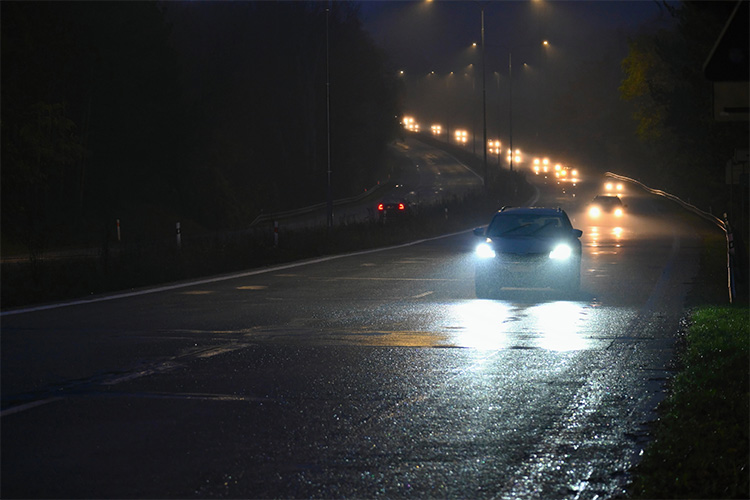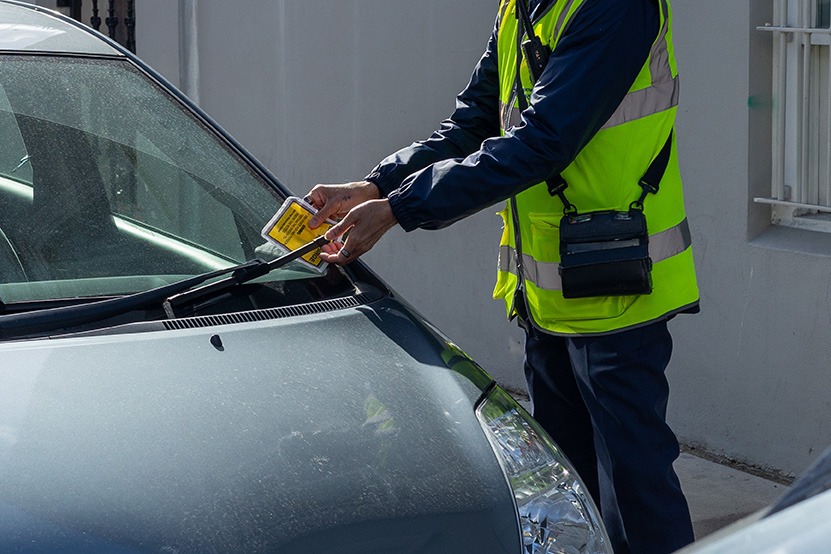Have you ever found yourself blinded by bright LED headlights while driving at night? You’re not alone! Many drivers are complaining about the intensity of modern headlights, especially the LEDs that seem to be getting more powerful every year. In this blog post, we’ll dive into why LED headlights are causing a problem, how regulators are trying to fix it, and how Fleet Service GB’s Driver Management programme can help improve road safety.
Why Are LED Headlights Too Bright?
LED headlights are quickly becoming the standard for new vehicles, offering better energy efficiency and clearer visibility. However, they come with a downside: they’re too bright. The issue lies in how LEDs are designed. Unlike traditional halogen bulbs, which produce a softer, yellow light, LEDs emit a bright, blue-toned light. This blue light is much harsher on the eyes, particularly when driving at night, and can cause glare and temporary blindness.
Additionally, LED headlights are highly concentrated in the middle of the beam, making them incredibly intense when they shine directly into another driver’s eyes. This can happen when vehicles with LED lights come over a hill or around a bend, catching the driver of an oncoming car off guard.
The Impact of LED Headlights in the UK Fleet Industry
Rising Complaints Among Fleet Drivers
The issue of dazzling headlights is becoming more pressing, particularly in the UK fleet industry. A 2022 RAC survey found that 89% of UK drivers believe some headlights are too bright, with many fleet drivers reporting frequent discomfort from intense LED beams. According to Department for Transport statistics, there are approximately 293 accidents per year linked to dazzling headlights. Fleet drivers, who spend longer hours on the road, are at a heightened risk of experiencing this kind of glare.
Older Drivers Are Most Vulnerable
The UK fleet industry employs a wide range of drivers, many of whom are over 50. These drivers are particularly vulnerable to the blinding effects of LED headlights. Research by the Royal Society for the Prevention of Accidents (RoSPA) shows that the time it takes for drivers aged 50 and above to recover from glare increases dramatically, from one second to nine seconds, which can be a dangerous delay when travelling at high speeds. This is a significant concern for fleet operators, who need to ensure that their drivers can safely navigate roadways at night.
Increased Accident Risk
Statistics indicate that a 18% of all road accidents in the UK occur in low-light conditions. With the rise of LED headlights, which are much brighter than older halogen lights, the risk of these accidents is escalating. Matrix headlights, a common feature in many modern vehicles, also contribute to the problem. Although these lights can adjust to road conditions, they often fail to react quickly enough to prevent dazzling oncoming drivers, particularly in rural areas. For fleet drivers, this represents a heightened risk of accidents, especially on poorly lit country roads.
Fleet Safety Concerns
As fleet operators strive to ensure the safety of their drivers, the risks associated with LED headlights are forcing them to rethink their safety training and maintenance protocols. Fleet drivers often face longer shifts and greater exposure to night-time driving, making them more susceptible to the dangers posed by glare. According to Fleet News, fleet managers are increasingly concerned about driver safety in the face of this growing issue. Regular vehicle maintenance, including headlight adjustments, is now a critical part of their safety strategies.
What’s Being Done About It?
Regulatory Response
As LED technology becomes more common, road safety authorities are beginning to take action. However, regulations are struggling to keep up with the rapid advancements in headlight technology. While some improvements have been made, the issue of poorly adjusted or overly bright headlights remains a significant concern. Regulators are focusing on tightening safety standards, such as ensuring headlights are properly angled and that the light intensity is within safe limits. These efforts are aimed at reducing the glare that causes temporary blindness and accidents.
How Can Drivers Help?
In the meantime, drivers can take proactive steps to reduce the risk of dazzling other road users:
- Check your vehicle’s headlights: Ensure they are properly aligned to avoid causing glare for other drivers.
- Use dipped beams: Always dip your headlights when approaching other vehicles to reduce glare.
- Drive defensively: Stay alert on dark roads, especially when other vehicles are approaching. Adjust your speed and position to avoid the effects of dazzling headlights.
Fleet Service GB’s Driver Management Programme: A Solution for Fleet Safety
For businesses managing fleets of vehicles, ensuring driver safety on the road is crucial. Fleet Service GB’s Driver Management Programme is designed to help companies and drivers stay safe, especially when dealing with challenges like dazzling headlights. Here’s how:
Driver Education
Fleet Service GB offers training that educates drivers on the dangers of driving at night and how to make adjustments in their driving behaviour. This includes practical tips on how to handle night-time driving and reduce the risk of accidents caused by poor visibility.
Regular Vehicle Maintenance
Another key part of the Driver Management programme is ensuring that vehicles are regularly serviced, including checks on headlight alignment. Properly maintained vehicles with well-adjusted headlights are less likely to cause glare for other drivers.
Risk Assessment
Fleet Service GB helps businesses assess the risks associated with road safety, including the impact of bright LED headlights. By analysing driving patterns, they can identify when and where drivers are most likely to encounter these issues and tailor training accordingly.
How Regulators Are Responding to the Issue
The glare from LED headlights has become a major concern, with accidents and near-misses increasing. Regulatory bodies are now focusing on stricter guidelines for headlight brightness and beam angles to reduce these risks. However, there’s still a need for drivers to take personal responsibility and ensure that their vehicles are correctly adjusted.
By working together, we can make roads safer for everyone.
FAQs About LED Headlights
Why are LED headlights so bright?
LED headlights are brighter because they emit a higher intensity of light, particularly in the blue spectrum. This makes them more focused and effective for the driver but can cause discomfort and glare for other road users.
How long does it take for my vision to recover from headlight glare?
After being dazzled by headlights, most drivers take between one and five seconds to recover. However, for some, it can take longer, especially older drivers.
How can I prevent being dazzled by headlights?
Make sure your vehicle’s headlights are correctly aligned. Use your dipped beams when approaching other vehicles, and if you’re sensitive to bright lights, avoid driving at night when possible.
FAQs About Fleet Service GB
What is Fleet Service GB?
Fleet Service GB is a UK-based provider that offers fleet management services, including driver safety programmes, vehicle maintenance, and risk management. Their goal is to ensure businesses have safe, well-maintained fleets and responsible drivers.
How does Fleet Service GB improve driver safety?
Fleet Service GB provides driver training, regular vehicle inspections, and a comprehensive risk assessment to ensure drivers and vehicles stay safe on the road. They also help businesses create safer driving policies tailored to their specific needs.
Can Fleet Service GB help with reducing the risks of LED headlight glare?
Yes! Through their Driver Management programme, Fleet Service GB educates drivers on how to safely navigate dazzling headlights, reducing the risk of accidents caused by poor visibility.



